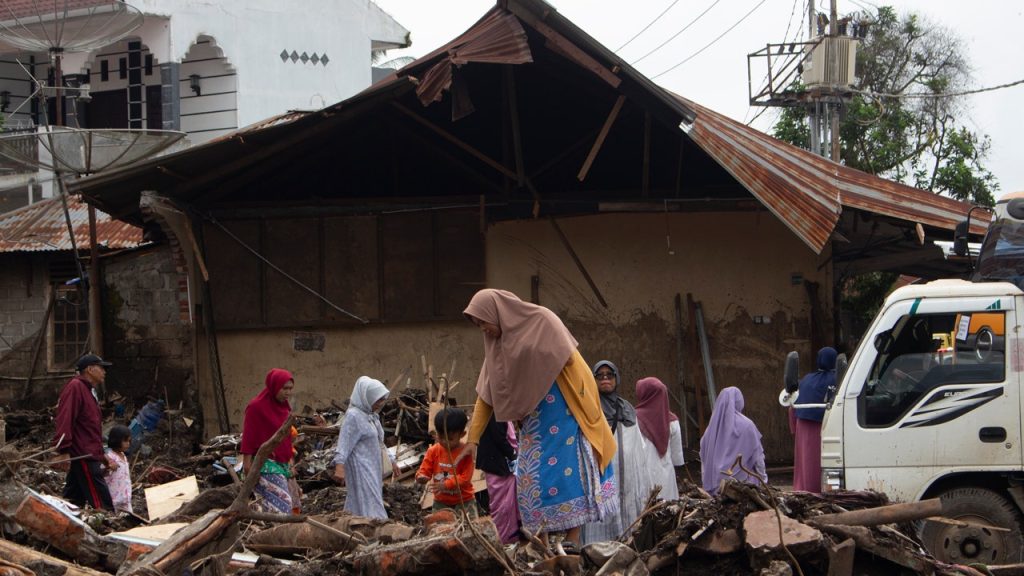Authorities in Indonesia took action on Wednesday to seed clouds in an attempt to prevent further rain and flash floods following heavy rainfall on Sumatra Island over the weekend that led to at least 59 deaths and 16 people missing. The monsoon rains triggered a landslide of mud and cold lava from Mount Marapi, causing rivers to overflow and devastating villages in four districts in West Sumatra. The floods swept away people, homes, and submerged hundreds of buildings, forcing over 1,500 families to seek refuge in temporary shelters.
The National Disaster Management Agency reported that 59 bodies had been recovered from the mud and rivers by Wednesday, mostly in the worst-hit Agam and Tanah Datar districts. Search and rescue teams were still looking for 16 missing individuals. Cloud seeding, a process that involves dispersing particles into clouds to induce precipitation, was conducted in hopes of redirecting the rain and aiding in the search and rescue efforts. The emergency response is set to continue until May 25, during which authorities will assess areas deemed unsafe for habitation and determine relocation plans for affected residents.
The meteorological agency predicts more rain in West Sumatra in the coming days, with the possibility of continued extreme rainfall until next week. To manipulate the clouds, an air force plane deployed salt flares on Wednesday to stimulate water release and prevent further devastation in the affected areas. The coordinated effort involving the air force and technology agencies utilized 15 tons of salt for the cloud seeding operation. As rescue workers navigated through rivers and debris-filled villages, the challenge of identifying victims and clearing pathways loomed large in the wake of the disaster.
Indonesia’s vulnerability to natural disasters, such as landslides and flash floods, is exacerbated by its geographical location along the Pacific “Ring of Fire,” a volatile region characterized by active volcanoes and seismic activity. Mount Marapi, which experienced an eruption last year claiming the lives of 23 climbers, remains active and poses a continued threat to surrounding communities. With over 120 active volcanoes across the country, Indonesia faces the ongoing challenge of mitigating the impact of natural disasters on its population residing in mountainous regions and flood-prone areas.
As the nation grapples with the aftermath of the recent floods, authorities are focused on providing relief to affected communities and conducting search and rescue operations to locate missing individuals. The collaborative efforts to seed clouds and mitigate further rain in West Sumatra demonstrate a proactive approach to disaster management in a country prone to environmental hazards. With a commitment to safeguarding lives and property, Indonesia seeks to mobilize resources and support systems to respond effectively to the challenges posed by extreme weather events and geological phenomena. By adopting innovative strategies and coordinating responses across agencies, the country aims to enhance resilience and preparedness in the face of natural disasters.


